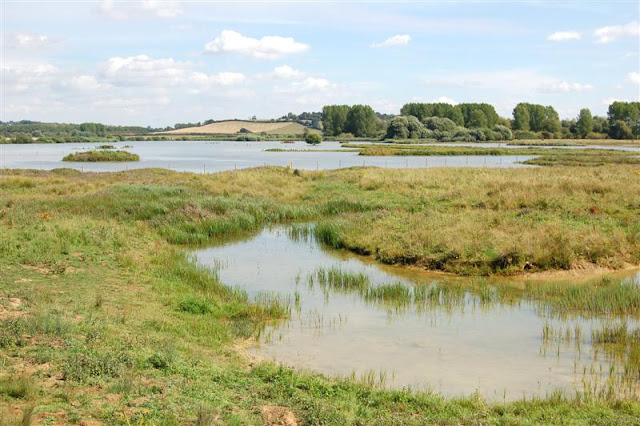We must have picked the worst week weather wise to go, as many outback areas had record rains. Most of the pictures on the post were taken during sunny spells that don't show the huge thunderstorms that usually built up during the afternoons, dumping vast amounts of rain.
When we first arrived in Laverton after our 950 km, 10 hour trip from Perth, there was a massive thunderstorm that seemed to circle the town, with a spectacular lightning show and pouring rain that flooded the area. We wondered if our parrot quest was going to be very short indeed, as the local people warned us about heading out into the desert, as most of the roads will probably be closed due to flooding if the rains continue!
The next morning dawned to mostly blue skies, so we took the chance and headed out along the Great Central Road towards the Great Victoria Desert. Even after all the rain, the road was very good, but how would the Point Sunday Road be? We needed to get to at least Point Sunday Camp for the night.
 |
| Princess Parrot |
 |
| Scarlet-chested Parrot |
Our 2 main target species, the Princess Parrot and Scarlet-chested Parrot.
The good rains this year had made many of the desert plants flower, such as these Desert Greilleas, which brought in big numbers of White-fronted and Grey-fronted Honeyeaters. By the end of the trip we had 13 honeyeater species!
A good birding spot called 'The Pines', about 120 km east of Laverton along the Great Central Road. This area alone had trees filled with hundreds of beautiful Budgerigars, probably 2000+ birds, and big numbers of Cockatiel as well.
A male Central Military Dragon (Ctenophorus isolepis), these guys were common in all sandy locations. Another reptile that was also common in the area, were Lozenge-marked Dragons (Ctenophorus scutulatus).
The Point Sunday Camp, wonderful location to set up camp and a place where Princess Parrots had also been seen recently. The Point Sunday Road had turned out to be quite smooth and mostly dry, even after all the recent rain.
One of the weird looking plants near the camp, a Caustic Vine, a species of Sarcostemma.
It's great fun sleeping in our swags, they are mostly rainproof, but it did rain during the night causing us to pack up a wet camp the next day.
Our quick-to-pack-away camp setup. Most of the evenings were lovely, but you could often see the lightning and thunderstorms on the horizon.
Some of the mornings were not so nice, with rain and a cold wind.
Due to the weather, we decided not to risk getting bogged (maybe for days) by going all the way out to Neale Junction, but decided to only go as far as Yeo Homestead along the Anne Beadell Highway. Yes, this is a good section of what is called the Anne Beadell Highway. There was a good birding area, along the 'highway' at Stoney Point.
The Homestead, another good birding area and a great place to camp. We read the visitors book, which stated that probably no one had been there for over 10 days. Not many people had visited this remote area lately.
Lots of interesting local information on the history and wildlife.
We only had time for a some quick birding and lunch, as the skies grew very dark with lots of rain clouds. We decided to return to the Point Sunday Camp for the last night, as the section of the Anne Beadell Highway we had travelled, was often very muddy and low-lying, and could become flooded very quickly if it rained hard.
The local shower.
The local well for your washing water needs.
But watch out for the snakes!
On the journey back out along Point Sunday Road, we came across this Thorny Devil (Moloch horridus).
A fantastic lizard that feeds on small ants.
Liz has a new friend.
We had not heard or sighted any Princess or Scarlet-chested Parrots during our journeys and thought that this trip was going to be fruitless, until we passed this spot (280 00’ 45.9’’ S 1230 58’ 36.2” E).
17.5 km north of Point Sunday Camp on the Point Sunday Road, we saw a small parrot fly to some low trees.
We got to the trees expecting the parrot had flown off, but Liz sighted it sitting quietly on a branch. It was a female similar to the one in this pic (not mine), but had more blue on the face and more vibrant colours. We had finally seen one of our target birds!
We were very happy to say the least, travelling back towards Laverton. That was a difficult and beautiful parrot to see! Even the Point Sunday Road seemed more colourful.
Sections of the road had wonderful wildflowers, such as these beautiful Parakeelya (Calandrinia sp.).
On the way back to Perth, near Marvel Loch, different species of Grevilleas were in flower attracting more honeyeaters, such as Tawny-crowned, White-eared and Yellow-plumed Honeyeaters. We had wanted to try and find Gilbert's Whistler, but many of the roads were either closed or flooded.
A nice end to our trip was to see this beautiful Western Blue-tongue (Tiliqua occipitalis), near Southern Cross.
It was a great trip, it would have been better had it not rained, and we probably would have got out as far as Neale Junction. Oh well, it leaves somewhere else to explore, maybe next spring, and get those Princess Parrots out there!
Lots of driving, lots of storms, wind and rain, but we did manage to see 78 bird species at the end of it, and one fantastic desert parrot.
































































































